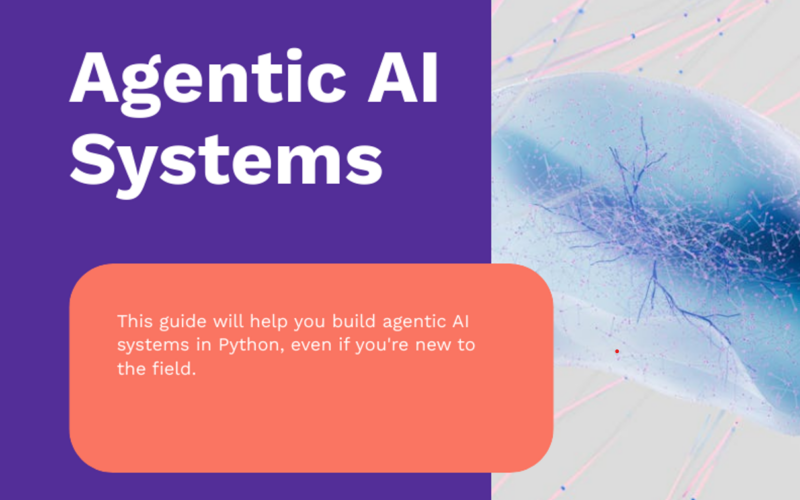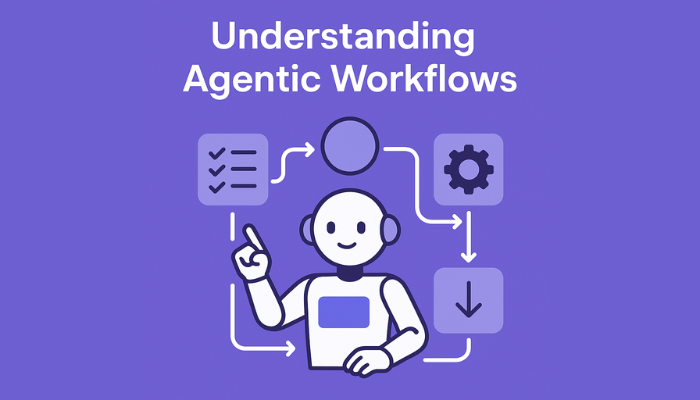Ever felt like your brilliant ML model is stuck in ‘development limbo’? You’ve fine-tuned the algorithm, celebrated the accuracy scores… but now comes the real challenge: actually getting it into production without everything falling apart. If that sounds familiar, you’re not alone—most AI teams struggle with the messy ‘last mile’ of machine learning.
Here’s the good news: the right MLOps tools can turn that chaos into a smooth, automated pipeline. Think of it like giving your ML projects a supercharged assembly line—where experiments, deployments, and monitoring actually work together instead of fighting for attention.
We’ve been there—wrestling with clunky workflows, incompatible tools, and ‘works on my laptop’ disasters. So we’re breaking down the top MLOps tools and platforms to help you pick the right one without the guesswork. No fluff, just real insights on:
- Importance of MLOps in Modern Machine Learning Workflows
- Which tools are best for experiments vs. large-scale deployments.
- Challenges to Consider in MLOps Adoption
- What Codewave uses to get models into production faster (and how you can too).”
So, let’s start with the basics.
What is MLOps?
MLOps, or Machine Learning Operations, refers to the set of practices and tools that automate the deployment, monitoring, management, and governance of machine learning models in production. It aims to simplify the entire ML lifecycle, from model development to deployment and continuous monitoring, ensuring scalability, efficiency, and collaboration between data science and operations teams.
Also Read: What is the Difference Between Machine Learning and Business Intelligence?
Importance of MLOps in Modern Machine Learning Workflows
In today’s AI-driven world, machine learning (ML) models are at the core of many critical business decisions. From predicting consumer behavior to optimizing supply chains, these models are constantly evolving. However, without an efficient, streamlined process, managing these models becomes a daunting task.
MLOps (Machine Learning Operations) fills this gap by ensuring that ML models are developed, deployed, and maintained in a consistent, reliable, and scalable manner. It provides the framework needed to integrate machine learning into the software development lifecycle, making it more manageable and efficient.
Here’s why MLOps is so important:
- Faster Deployment and Iteration: MLOps enables teams to move from development to production faster, ensuring models can be deployed quickly and updated regularly with minimal friction.
- Collaboration Across Teams: MLOps bridges the gap between data scientists, engineers, and operations teams, fostering collaboration and ensuring that everyone is working from the same set of processes and tools.
- Reliability and Stability: By automating workflows and integrating continuous testing, MLOps ensures that models perform as expected in production environments. This reduces downtime, errors, and the risk of deploying faulty models.
- Scalability: As your business grows, so does the amount of data and the complexity of models. MLOps tools and practices help scale your machine learning efforts, allowing models to handle increasing volumes of data and more complex tasks without sacrificing performance.
- Model Governance and Compliance: In highly regulated industries, MLOps helps manage the transparency, security, and ethical considerations of AI models, ensuring they meet required standards and compliance regulations.
In short, MLOps ensures that machine learning workflows are efficient, secure, and scalable, enabling organizations to derive actionable insights from their models consistently. It’s the key to turning machine learning into a sustainable, long-term solution for your business.
Top MLOps Tools & Platforms
When it comes to machine learning, choosing the right tools can make all the difference in how efficiently and effectively your models perform. MLOps tools help manage the entire lifecycle of machine learning models.
These platforms bridge the gap between data science and operations, enabling teams to deploy and maintain models quickly and consistently.
1. Kubeflow
Kubeflow is an open-source platform designed to simplify and automate machine learning workflows on Kubernetes. It offers a comprehensive suite of tools for building, training, and deploying machine learning models, allowing data scientists and developers to focus more on innovation rather than managing infrastructure.
Kubeflow leverages Kubernetes’ power to ensure that machine learning models can be easily scaled, deployed, and maintained. This makes it a preferred solution for organizations looking for flexibility and scalability in their MLOps pipeline.
Key Features:
- Multi-cloud Support: Kubeflow can be deployed on major cloud platforms such as Google Cloud, AWS, and Azure, providing flexibility in where your models run.
- Pipeline Orchestration: Automates the entire lifecycle of machine learning models, from data processing to training, validation, and deployment. This ensures a seamless workflow from start to finish.
- Flexible Deployment: You can deploy Kubeflow both on-premises or in the cloud, depending on your organization’s infrastructure needs.
- Extensive Integration: Supports integration with popular machine learning frameworks like TensorFlow, PyTorch, and Scikit-learn, allowing for a diverse set of tools to be used within the same platform.
- Scalability: Kubeflow is designed to scale easily to handle large datasets and complex machine learning models, ensuring that as your needs grow, Kubeflow can adapt to support them.
Pros and Cons of Kubeflow
| Pros | Cons |
| Highly scalable for large and complex ML workflows. | Can be complex to set up, requiring Kubernetes expertise. |
| Offers end-to-end automation of ML pipelines. | Limited documentation and community support for certain use cases. |
| Supports multi-cloud deployments for flexibility. | Can have high resource overhead if not properly optimized. |
| Integrates seamlessly with various ML frameworks. | Requires significant computing resources, which may not be ideal for small teams. |
| Open-source, which means no licensing costs. | May be overkill for small-scale projects or teams. |
2. MLflow
MLflow is an open-source platform that manages the complete machine learning lifecycle, including experimentation, reproducibility, and deployment. It provides a central place to log, track, and monitor all aspects of your ML models, from initial experiments to final deployment. This makes it a great choice for teams looking for a unified solution that can track experiments, manage models, and scale deployments.
Key Features:
- Experiment Tracking: MLflow allows you to log parameters, metrics, and artifacts from every experiment, enabling easy tracking of model performance over time.
- Model Management: The platform provides a centralized repository to store, version, and share machine learning models, ensuring that teams can access and reuse models efficiently.
- Scalable Deployment: MLflow integrates with Kubernetes and cloud environments, allowing you to deploy models at scale, ensuring consistency and reliability.
- Cross-library Support: It supports a variety of popular machine learning frameworks, such as TensorFlow, PyTorch, and Scikit-learn, making it flexible for teams working across different tools.
- Model Serving: MLflow offers a simple model serving feature that makes it easy to expose models as REST APIs for real-time inference.
Pros and Cons of MLflow
| Pros | Cons |
| Easy to integrate with popular machine learning libraries. | Can be challenging to set up for teams unfamiliar with its components. |
| Centralized management of experiments and models. | Some features require advanced configuration for optimal use. |
| Provides versioning for models, making them easily retrievable. | Can experience performance issues with large-scale deployments. |
| Scalable and cloud-compatible for easy model deployment. | Limited built-in capabilities for non-ML data processing. |
| Open-source with a strong community and frequent updates. | May require additional tools for end-to-end pipeline orchestration. |
3. TFX (TensorFlow Extended)
TensorFlow Extended (TFX) is an end-to-end platform specifically built to manage the entire machine learning lifecycle, from data ingestion to model deployment. It is a production-ready solution built by Google and is designed to scale TensorFlow-based machine learning pipelines.
This makes it an ideal choice for organizations that rely on TensorFlow for their machine learning models and need a platform that can handle the complexity of production environments.
Key Features:
- Pipeline Automation: TFX automates the entire pipeline, from data preprocessing to model training and serving, ensuring consistency and reproducibility.
- Data Validation: It includes built-in tools for validating input data and ensuring it meets the expected quality standards, which helps reduce errors in model training.
- Model Validation: TFX automatically validates the model’s performance using pre-defined metrics to ensure the model works as expected before deployment.
- Scalability: TFX is optimized for high-scale environments, supporting large datasets and complex models.
- Extensive TensorFlow Integration: Being part of the TensorFlow ecosystem, TFX integrates seamlessly with TensorFlow-based models, TensorFlow Serving, and TensorFlow Hub, providing a unified experience.
Pros and Cons of TFX
| Pros | Cons |
| Tailored for TensorFlow models, offering deep integration. | Requires a good understanding of TensorFlow and its ecosystem. |
| Highly scalable and optimized for large production environments. | Primarily focused on TensorFlow, limiting flexibility for non-TensorFlow models. |
| Provides end-to-end automation of ML pipelines. | Complex to set up and configure for teams not already using TensorFlow. |
| Built-in data and model validation features. | May require additional tools for complete end-to-end orchestration. |
| Production-ready and used by major tech companies. | Can be overkill for small projects or teams with simpler needs. |
4. DVC (Data Version Control)
DVC is an open-source version control system designed to handle large-scale machine learning projects. Unlike traditional version control systems that track code, DVC focuses on managing data, models, and experiments. It is built on top of Git, allowing data scientists and developers to track not only their code but also datasets, model files, and hyperparameters used in experiments.
DVC is especially useful for teams working with large datasets and models that need to be versioned and managed throughout the lifecycle of a machine learning project.
Key Features:
- Data Versioning: DVC allows you to version control large datasets, making it easy to track changes in data over time.
- Pipeline Management: Provides tools for defining, running, and managing reproducible machine learning pipelines.
- Seamless Git Integration: Since DVC is built on Git, it integrates seamlessly with existing Git workflows, making it easy for teams to adopt.
- Remote Storage Support: DVC allows you to store datasets and models on remote storage systems such as S3, GCP, Azure, or even an on-premise server.
- Collaboration and Reproducibility: Enables teams to collaborate by sharing experiments and ensuring that models can be reproduced with the same data and parameters.
Pros and Cons of DVC
| Pros | Cons |
| Easily integrates with existing Git workflows. | Requires Git expertise, which may not be familiar to all data scientists. |
| Supports versioning of large datasets and machine learning models. | Can be challenging to set up for teams unfamiliar with version control concepts. |
| Enables reproducibility of experiments across teams. | Some storage configurations can be complex to manage. |
| Offers remote storage support for backing up large datasets. | Doesn’t handle orchestration of the entire ML pipeline; it focuses on versioning. |
| Open-source and free to use, with a strong community. | May require additional tools for full ML pipeline management. |
5. Azure Machine Learning
Azure Machine Learning is a cloud-based platform provided by Microsoft that enables teams to develop, train, and deploy machine learning models at scale. It offers a wide array of tools for building machine learning models, managing datasets, and automating the ML lifecycle, all hosted within the Azure cloud environment.
This platform is ideal for organizations looking for an enterprise-level solution with tight integration into the Microsoft ecosystem. Azure ML provides everything from automated machine learning to deep learning frameworks, making it suitable for both beginner and advanced users.
Key Features:
- Automated Machine Learning (AutoML): Azure ML allows users to automate the process of selecting the best machine learning model for their data, making it easier for beginners to develop ML solutions.
- End-to-End Model Management: Provides tools for managing the entire ML lifecycle, from data preparation to model deployment and monitoring.
- Powerful Compute Resources: Supports on-demand access to scalable cloud computing resources, ensuring models can be trained faster and at scale.
- Integrated DevOps Support: Seamlessly integrates with DevOps pipelines, automating the deployment and monitoring of ML models in production.
- Secure and Compliant: Azure ML ensures that data and models are handled in accordance with various industry standards and regulations, making it suitable for organizations in regulated sectors.
Pros and Cons of Azure Machine Learning
| Pros | Cons |
| Offers AutoML for quick model selection and development. | It can be expensive, especially for small businesses or startups. |
| Fully managed platform with integrated tools for model management. | Some features may require a steep learning curve for beginners. |
| Scalable, on-demand computing resources for training models. | Primarily designed for use within the Azure ecosystem, limiting flexibility for users outside it. |
| Strong integration with other Microsoft services like Power BI and Azure DevOps. | It may have additional costs for certain services, depending on usage. |
| Built-in security and compliance features, make it ideal for regulated industries. | Some configurations may require advanced knowledge of Azure’s infrastructure. |
To complement these MLOps tools, check out our next blog on the Top Python AI and Machine Learning Libraries that power your models.
When you’re exploring MLOps tools, one of the first things to consider is how easily they can plug into your existing systems. After all, a tool is only as good as how well it works with everything else you’re already using, right?
Integration and Interoperability in MLOps Tools
MLOps tools shine when they play well with other platforms. You want a system that doesn’t force you to change your entire workflow. Here’s what you should look for to make sure everything works together:
- Data Management: Your MLOps tool should easily sync with cloud storage like AWS S3, Google Cloud, or even your on-prem databases. This makes data access a breeze and keeps things running smoothly.
- Versioning and Experiment Tracking: Tools like Git and DVC help you keep track of model versions, datasets, and experiments. This ensures that nothing slips through the cracks and your work can be easily reproduced.
- CI/CD Pipelines: A solid MLOps platform will integrate well with your CI/CD pipeline, automating everything from model testing to deployment. Think of it as giving your models a fast-track pass to production!
- Scalability and Cloud Support: Look for tools that play nice with cloud platforms like AWS, Azure, or GCP. That way, when you need to scale your models, your infrastructure is ready to support it.
- Security and Compliance: You need peace of mind knowing that your sensitive data is safe. A good MLOps tool will integrate with security frameworks and help ensure compliance with GDPR, HIPAA, and other important regulations.
When your MLOps tools integrate seamlessly with your tech stack, everything works faster, smoother, and more efficiently. It’s like having all the gears of your machine running in perfect sync.
Now that you’ve got a better idea of what to look for in MLOps tools, it’s time to know how to actually make them work for you.
Implementing MLOps tools isn’t just about picking the right platform; it’s about setting them up in a way that drives success across your team and projects.
Best Practices for Implementing MLOps Tools
Here are some best practices to keep in mind as you roll out your MLOps strategy:
Start with Clear Goals and Metrics
Before you jump into selecting tools, take a step back and define your goals. What do you want to achieve with MLOps? Is it faster model deployment? Improved collaboration? More efficient model monitoring? Set clear KPIs and success metrics so that you know exactly what you’re working toward.
Build a Strong Data Pipeline
Your models are only as good as the data you feed them. A well-organized data pipeline is essential for smooth MLOps. Ensure your data is clean, reliable, and easily accessible for your ML models to train on. Also, set up automated data validation to catch any issues early.
Automate as Much as Possible
One of the core principles of MLOps is automation. Automating tasks like model testing, validation, and deployment can save your team loads of time and reduce the chances of errors. Setting up CI/CD pipelines for your ML models is a game-changer for efficiency.
Version Control is Key
Just like code, machine learning models and datasets need version control. Using tools like Git, DVC, or MLflow to track changes in your models, data, and experiments will help maintain consistency and make it easier to reproduce results.
Test and Monitor Models in Production
Once your models are live, testing doesn’t stop. Implement automated testing for your models in production to ensure they continue to perform as expected. Regular monitoring will help you spot performance issues early and make the necessary adjustments.
So, you’re all set to dive into MLOps, right? Well, before you get too carried away with all the possibilities, let’s take a quick detour. While MLOps can do wonders, it’s not all sunshine and rainbows.
Challenges to Consider in MLOps Adoption
Like any new tool or system, there are some bumps along the road you’ll need to watch out for.
Complexity and Steep Learning Curves
MLOps tools can be pretty powerful, but they aren’t always the easiest to get the hang of. From managing complex workflows to understanding different tools’ interactions, getting your team up to speed might take some time. Training and a solid onboarding plan are essential to smooth the transition.
Data Silos
Data is the backbone of any machine learning project, but many organizations still struggle with siloed data across departments. This lack of integration can make it harder to build cohesive models or track performance accurately. You’ll need to break down these silos to make the most of your MLOps tools.
Integration with Existing Systems
As we mentioned earlier, good integration is key, but the reality is that MLOps platforms don’t always play nice with your existing tech stack. Ensuring that everything connects seamlessly requires effort, especially when dealing with legacy systems or multiple tools that aren’t designed to work together.
Security and Compliance Concerns
With great power comes great responsibility. MLOps tools handle sensitive data, and as regulations like GDPR and HIPAA become more stringent, ensuring that your platform complies can be tricky. You’ll need to constantly monitor for vulnerabilities and ensure data privacy isn’t compromised.
With these challenges in mind, it’s important to approach MLOps adoption with a strategy that includes proper planning, team upskilling, and a clear roadmap.
Once you’re ready for the bumps, MLOps can truly take your machine learning operations to the next level!
Why Choose Codewave for Your MLOps Needs?
At Codewave, we don’t just implement MLOps tools—we ensure they work seamlessly to optimize every stage of your machine learning lifecycle. Here’s why Codewave should be your go-to partner for MLOps consulting:
- Custom MLOps Strategies: We develop MLOps solutions that align perfectly with your business goals, whether it’s reducing churn, improving forecasting, or personalizing customer experiences.
- Seamless Integration: With extensive experience in integrating tools like Kubeflow, TFX, TensorFlow, and PyTorch, we ensure your MLOps infrastructure works smoothly with your existing systems, maximizing efficiency.
- End-to-End Support: From initial assessment to deployment and continuous monitoring, we provide full support. We help you build reliable pipelines, automate workflows, and implement scalable solutions, ensuring your systems grow with your business.
- Scalable, Secure Solutions: We prioritize both scalability and security at every step. Using tools like Kubernetes, Terraform, and industry-standard security practices, we ensure your models are secure and ready to scale with your business.
- Proven Results: Our clients see substantial improvements in deployment times, reduced errors, and enhanced model accuracy. On average, companies that work with us experience 2x faster model retraining cycles and 60% fewer deployment errors, leading to a more efficient and reliable MLOps environment. View Portfolio
While MLOps tools and frameworks help simplify machine learning workflows, real-world applications show how these tools can make a direct impact on industries. Take HealthFlex, for example—a project where we successfully implemented scalable AI solutions to optimize healthcare operations.
Let’s take a closer look at how this project demonstrates the power of integrating AI systems in practical scenarios.
In our collaboration with Healthflex, a leading healthcare services provider, Codewave developed an AI-driven platform to streamline patient data management and predictive analytics. Leveraging TensorFlow, we designed deep learning models capable of analyzing vast datasets to predict patient health trends, enabling proactive care strategies.
Key Achievements:
- Predictive Analytics: Implemented models that forecast patient health outcomes, assisting healthcare professionals in early intervention.
- Data Integration: Unified disparate data sources into a cohesive system, enhancing data accessibility and decision-making.
- Scalability: Developed solutions capable of handling increasing data volumes, ensuring long-term operational efficiency.
This project exemplifies Codewave’s commitment to delivering customized AI solutions that drive tangible improvements in healthcare operations.
For more details, you can visit the Healthflex Case Study.
If you’re ready to optimize your machine learning operations and ensure your models bring real business value, Codewave is here to help. Let’s collaborate on an MLOps strategy that meets your needs today and supports future growth.
Contact us now and take the first step toward smarter, faster, and more efficient machine learning!
Up next: Key AI Trends to Watch in 2025
Codewave is a UX first design thinking & digital transformation services company, designing & engineering innovative mobile apps, cloud, & edge solutions.







